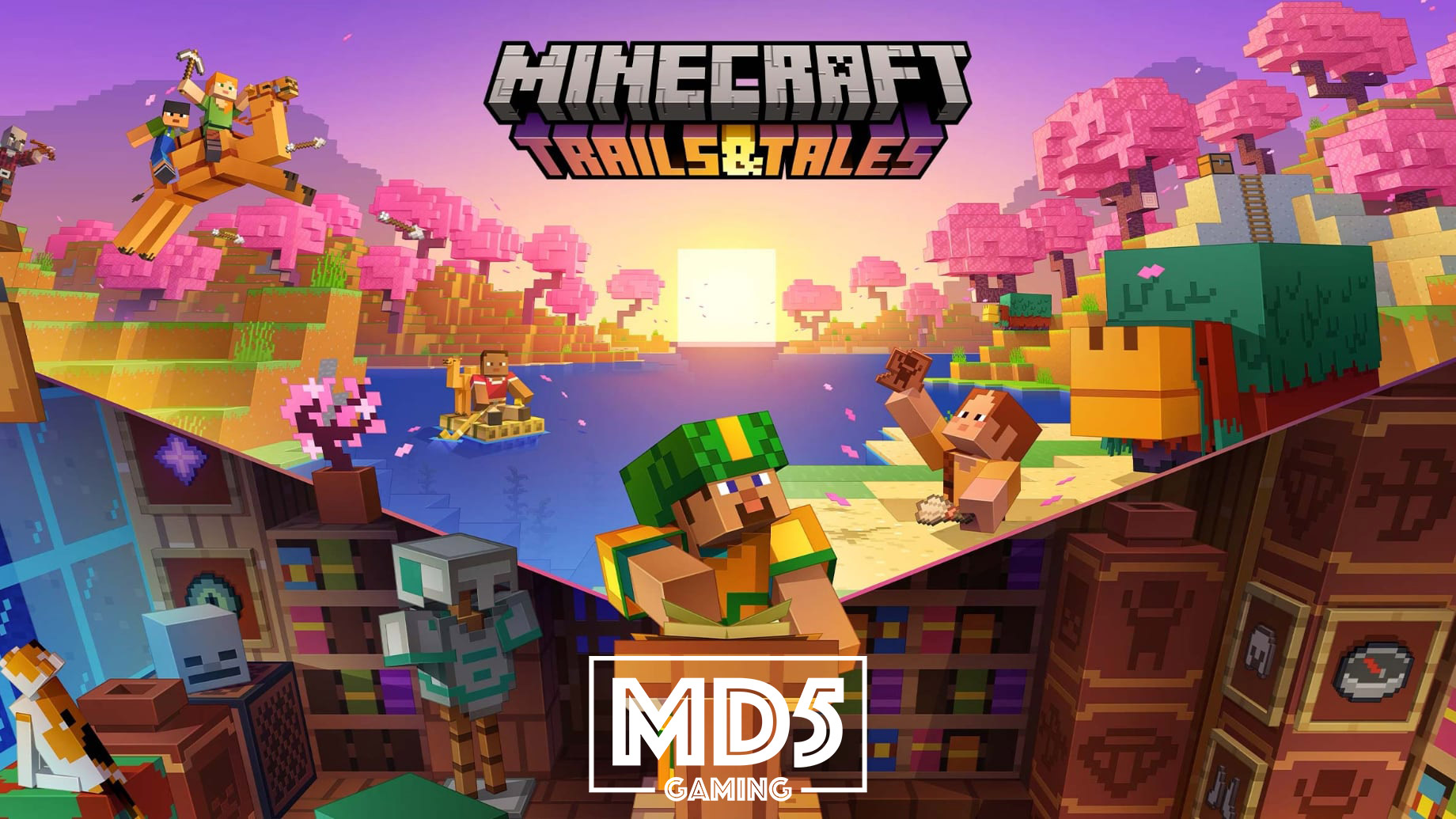
Introduction
Minecraft 1.20 The Trails & Tales update released on June 7th, 2023 was one of the most anticipated updates in the history of the game with Mojang introducing Archaeology to the game along with a new structure called the Trail Ruins among many other changes and new additions to the game.
Minecraft is a game that never stops evolving. With every update, new features, blocks, items, mobs and biomes are added to the game, making it more diverse and immersive for players. The latest update, 1.20 Trails and Tales is no exception.
The main theme of this update is exploration and adventure. The developers wanted to make the world more alive and interesting, with new places to discover and stories to uncover. That’s why they added Archaeology, a significant feature of this update. This is a new mechanic that allows players to dig up ancient relics and artifacts from buried ruins. These items can be used to craft new blocks and items, such as pottery, banners, maps and books. Some of them can also reveal secrets about the history and lore of the Minecraft world. Archaeology is a fun and creative way to interact with the environment and learn more about the game.
The update also introduces a new biome along with new mobs and items that enhance the gameplay. The new mobs are friendly, such as the camels and the new unique sniffer mob. The new biome is a cherry blossom biome with pink leaves that you can find on your adventures. This new biome includes new wood called cherry blossom wood which can be used to create a whole set of new items. Some of the new items include hanging signs, pots, bamboo rafts, cherry blossom wood, and more
The 1.20 Trails and Tales update is a huge update that adds a lot of content and variety to Minecraft. It makes the game more fun and engaging for both new and veteran players. It also opens up new possibilities for modding and customizing the game. If you haven’t tried it yet, I highly recommend you download it and experience it for yourself. You won’t regret it!
New Mobs
Camels
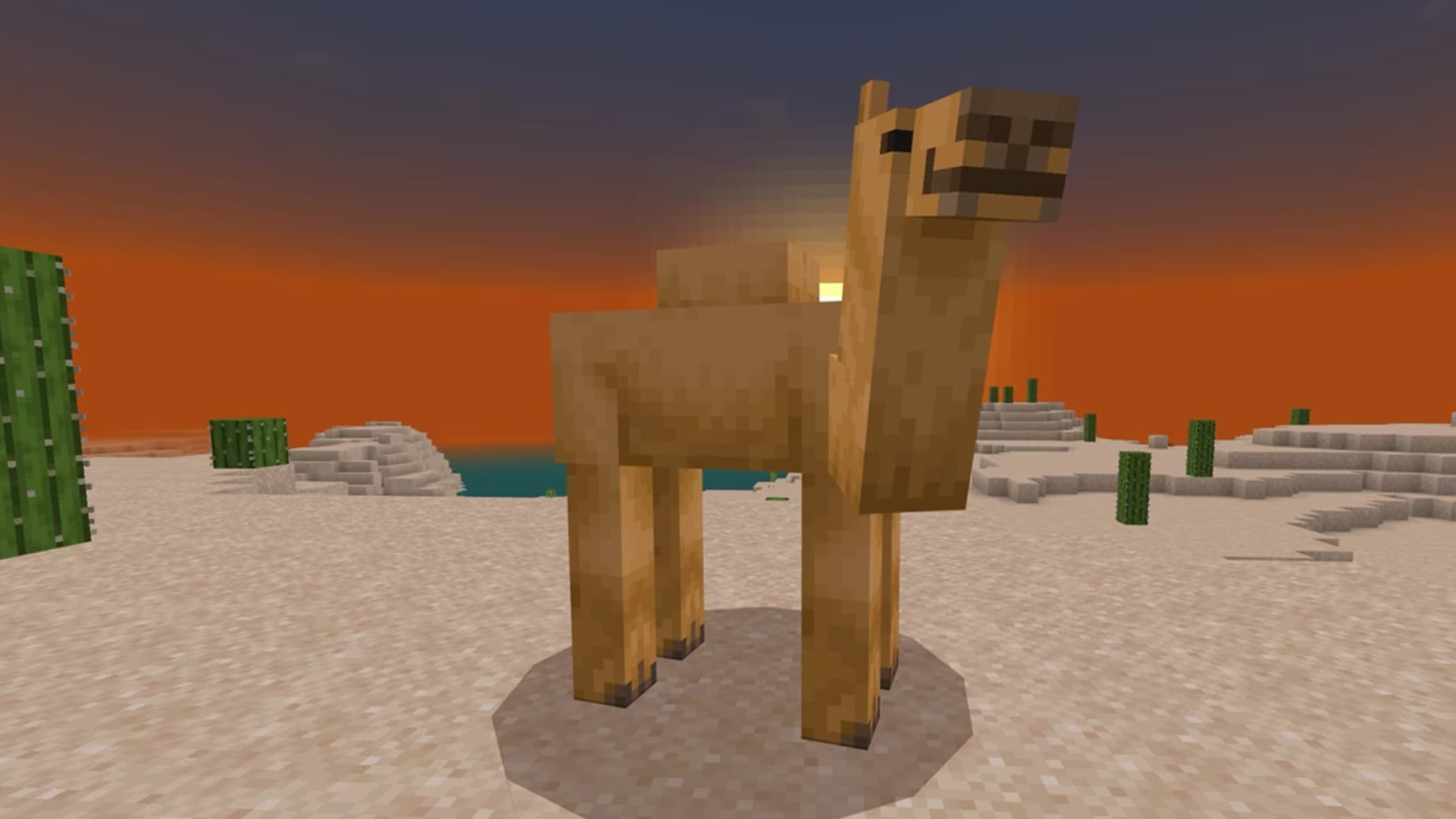
Minecraft is introducing camels into the gameplay. These large mobs will only materialize naturally in desert biomes, as anticipated. Being one of the biggest entities in the game, riding them at night provides an advantage by keeping you beyond the grasp of hostile mobs. Once tamed, a single camel can accommodate two players simultaneously which means you can now ride together with your friends! However, it’s worth noting that camels, unlike their equine counterparts, traverse complex terrains at a significantly slower pace.
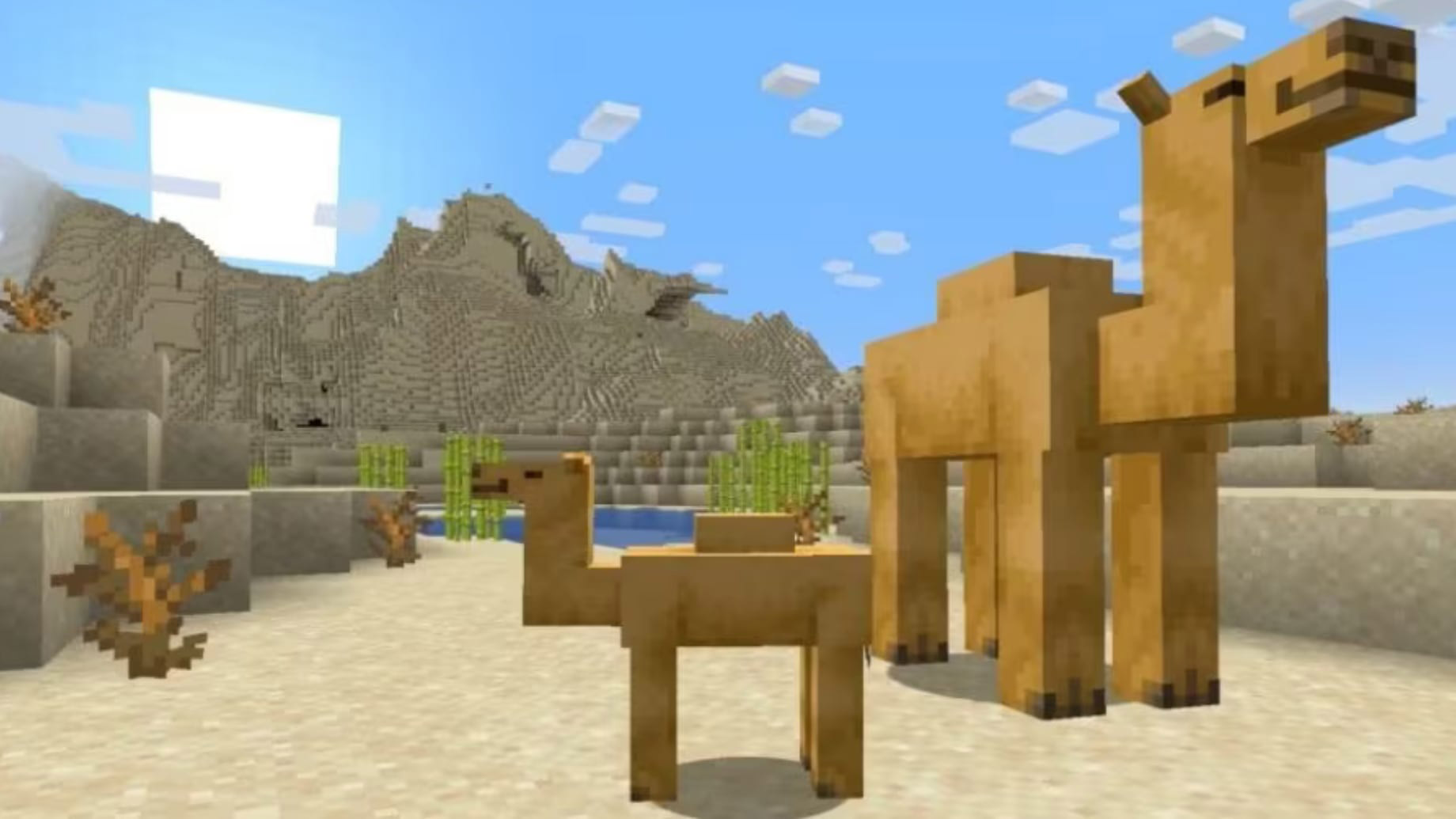
However, the dash ability of camels enables them to swiftly traverse relatively flat landscapes. This unique capability also empowers them to leap across ravines. It’s also worth mentioning that camels can be bred in Minecraft’s desert biomes using cactus as nourishment, resulting in adorable baby camels. Therefore, given the appropriate conditions, camels can eventually become a prevalent entity in the game’s breeding farms.
The Sniffer
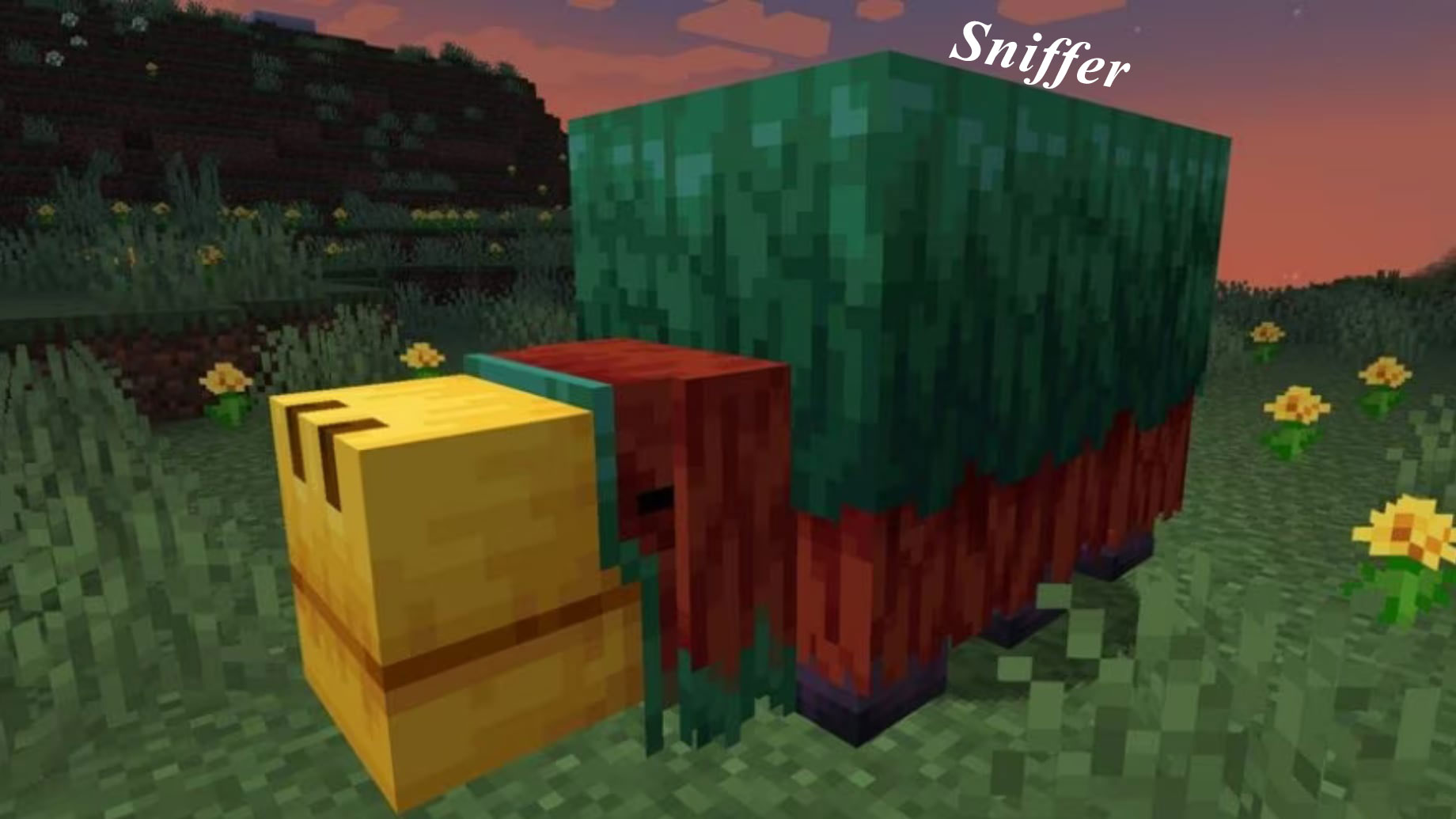
The Sniffer is a unique mob that was voted in by the players themselves during the Minecraft Mob Vote in 2022, receiving over 50% of the votes. This mob also presents a juvenile variant, birthed through Sniffer eggs that are found from digging in suspicious sand with the new craftable brush that players can create. The Sniffer egg offers additional breeding opportunities for the players. In the gameplay context, sniffers are designed to detect seeds for exclusive and novel plants in the overworld. We eagerly anticipate observing the variety of new Minecraft farms this mob may instigate. Disregarding its unusual visual aspects, the Sniffer exhibits behaviour similar to the new camel mob, where it can recline on the ground for rest. When not resting, it wanders aimlessly. Its pace is leisurely, and interestingly, its nostrils exhibit a slight bounce when it is engaged in “sniffing” out newly introduced seeds – Torchflower and Pitcher Plant. The Sniffer mob is a passive mob.
Sniffer Egg
The Sniffer Egg can be found when players brush suspicious sand in warm ocean ruins. The drop rate for a Sniffer Egg is 6.7%. Suspicious Sand can be rare and hard to spot making the Sniffer Egg an item that requires patience to acquire.
Torch Flower
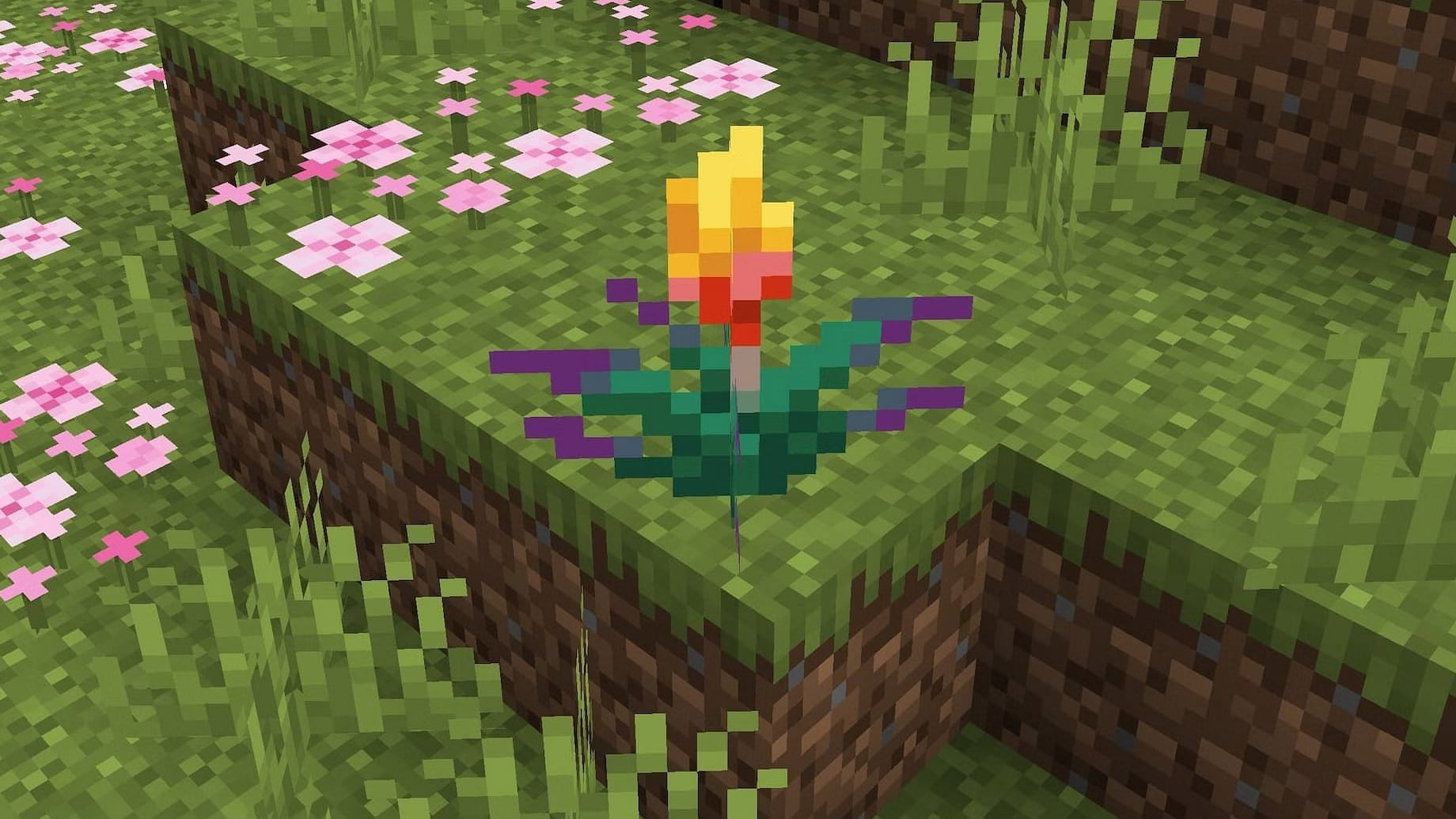
The torchflower seed serves multiple purposes: it can be used both to breed and attract sniffers, and it needs to be sown on farmland in order to grow into its flower form.
Once it reaches maturity, the torchflower can be harvested and replanted. As a bonus, it can also be utilized to create dye!
Pitcher Plant
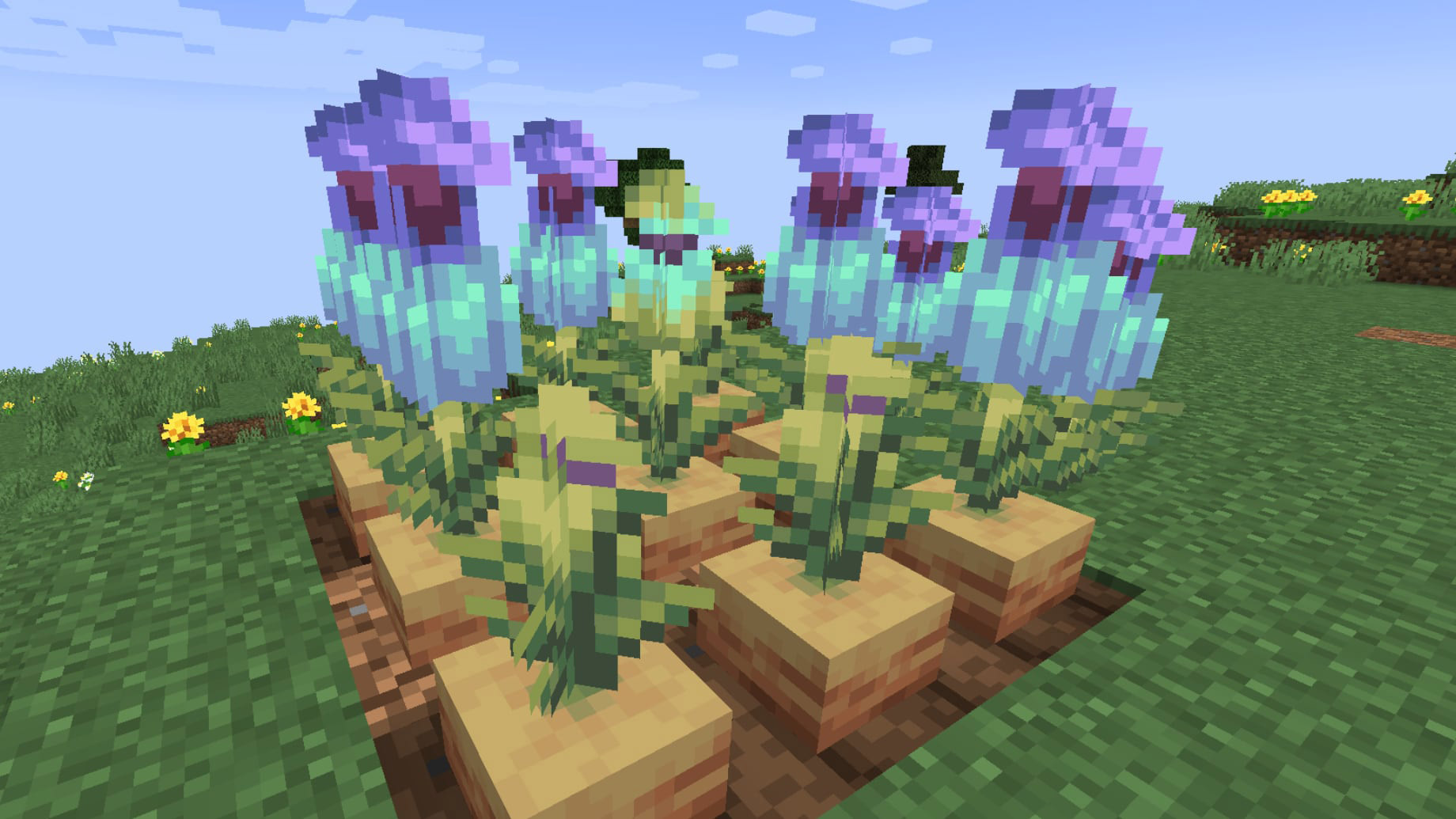
The pitcher plant originates as a seed pod which you can plant on farmland, allowing it to progress through various growth stages. Alternatively, the pod can also be used as food for chickens and parrots.
Upon reaching full growth, the pitcher can be harvested and placed similarly to any regular Minecraft flower!
There’s a lot more to explore with these new plants and in Minecraft’s latest Trails & Tales Update in its entirety! For more details, feel free to peruse our other articles, or continue immersing yourself in the game to unravel more intriguing secrets!
New Biome
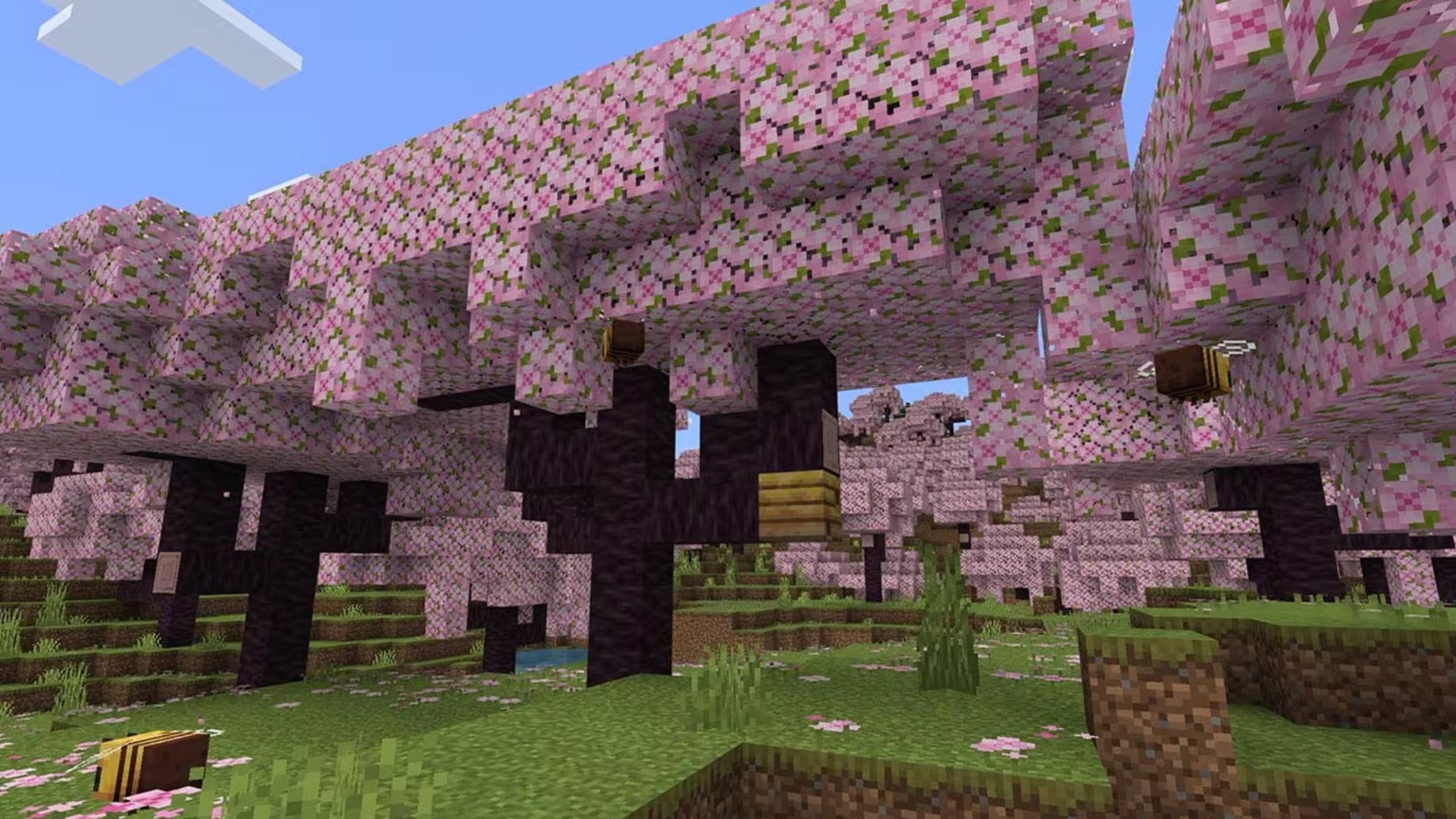
Cherry Blossom Biome
Minecraft 1.20 is set to introduce a new “pink” biome, aptly named Cherry Blossom. As you’d anticipate, it’s an overworld forest biome distinguished by the signature cherry blossom trees with their characteristic pink foliage. Further adding to the pink theme, the biome’s flowers also bear the same hue. Although there are no exclusive mobs spawning in this biome, there is a predominant presence of rabbits and bees. The introduction of the cherry blossom tree also ushers in a new set of cherry wood, characterized by its light pink blocks and items. As an added feature, this biome also provides new cherry blossom saplings and cherry logs. A notable aspect of the cherry blossom biome, compared to other forest biomes, is the densely clustered trees with a unique branch-based pattern with pink petals falling off the leaves. This renders it not only aesthetically pleasing but also an apt choice for crafting hidden bases within the trees.
New Feature – Archaeology
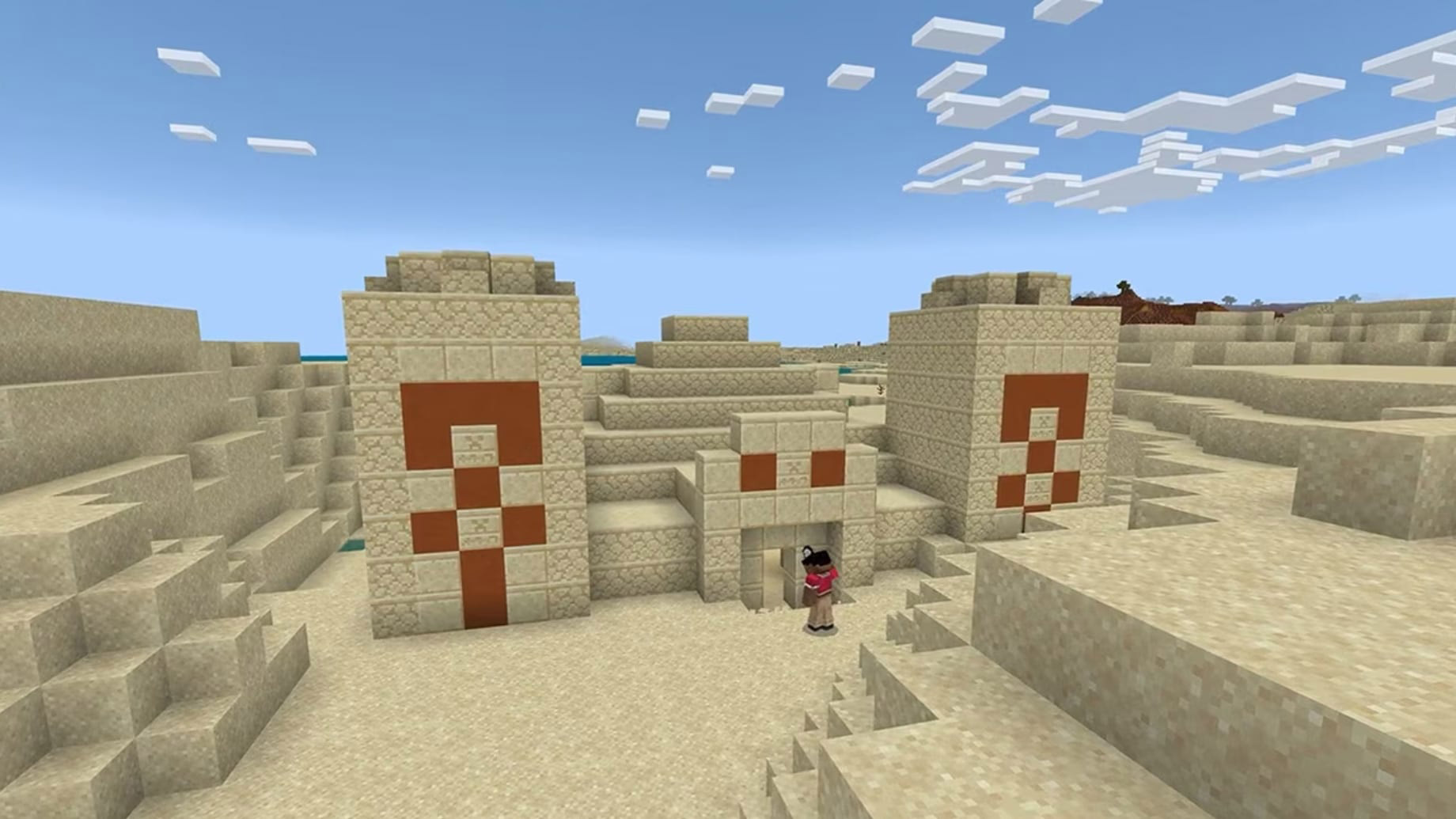
After long anticipation, Minecraft is finally incorporating the much-awaited archaeology elements into the game. This feature allows you to explore your world in search of suspicious sand and gravel blocks. When dusted, these new blocks uncover pottery shards (referred to as pottery sherds in Minecraft’s terminology), which can be combined to create ancient decorative pots within the game. Each pot boasts a distinctive design, reflecting various elements of Minecraft. The archaeology system also introduces a new “brush” tool in Minecraft, used for the dusting process. At present, the game features 20 unique pot designs, each with a unique aesthetic appeal. While the game initially started with just four designs, additional ones have subsequently been incorporated into the game.
Suspicious sand and gravel blocks will appear in existing Desert Temples, Ocean Ruins, and a novel location introduced by the archaeology system – the Trail Ruins. This new structure in Minecraft will require some excavation work to fully uncover. Once you’ve done that, your task will be to locate individual blocks and meticulously dust them down.
A Craftable Brush For Archaeology
The brush is a fundamental tool in the archaeology system introduced in Minecraft. It enables players to gently excavate ancient blocks, such as suspicious sand and suspicious gravel, revealing valuable items such as pottery shards and armor trims. These discovered shards can then be assembled to create uniquely patterned pots. This tool effectively brings an engaging archaeological dimension to the game.
To begin your archaeological adventure, you need to locate suspicious sand and suspicious gravel blocks. These blocks bear resemblance to their regular counterparts but have a more granulated texture. A reliable way to find suspicious sand is by inspecting the base of desert wells in Minecraft.
Upon discovering a suspicious sand block, you must equip your brush and apply it to the block. Gradually, the block will reveal a distinctive treasure.
Crafting A Brush For Archaeology
To craft an archaeology brush you need a crafting table and then you need to gather
- 1 Feather
- 1 Copper Ingot
- 1 Stick
Suspicious Sand or Gravel
Suspicious Sand can be located in Desert Temples, Desert Wells, and Warm Ocean Ruins, while Suspicious Gravel is found in Cold Ocean Ruins and Trail Ruins. These delicate blocks are quite elusive and easily damaged, so proceed with caution! By gently brushing Suspicious Sand or Suspicious Gravel using a Brush, you can unearth ancient objects concealed within.
Pottery Sherds
Pottery shards, which come in a set of twenty unique designs, are essential components for crafting ornately decorated pots. These can exclusively be discovered by carefully brushing suspicious sand or gravel blocks. There’s a chance to acquire pottery shards when brushing suspicious sand or gravel, found in locations such as trail ruins, ocean ruins, desert pyramids, and desert wells. Upon brushing, the suspicious block transitions into regular sand or gravel, potentially yielding one of the twenty variants of pottery shards.
Decorative Pots
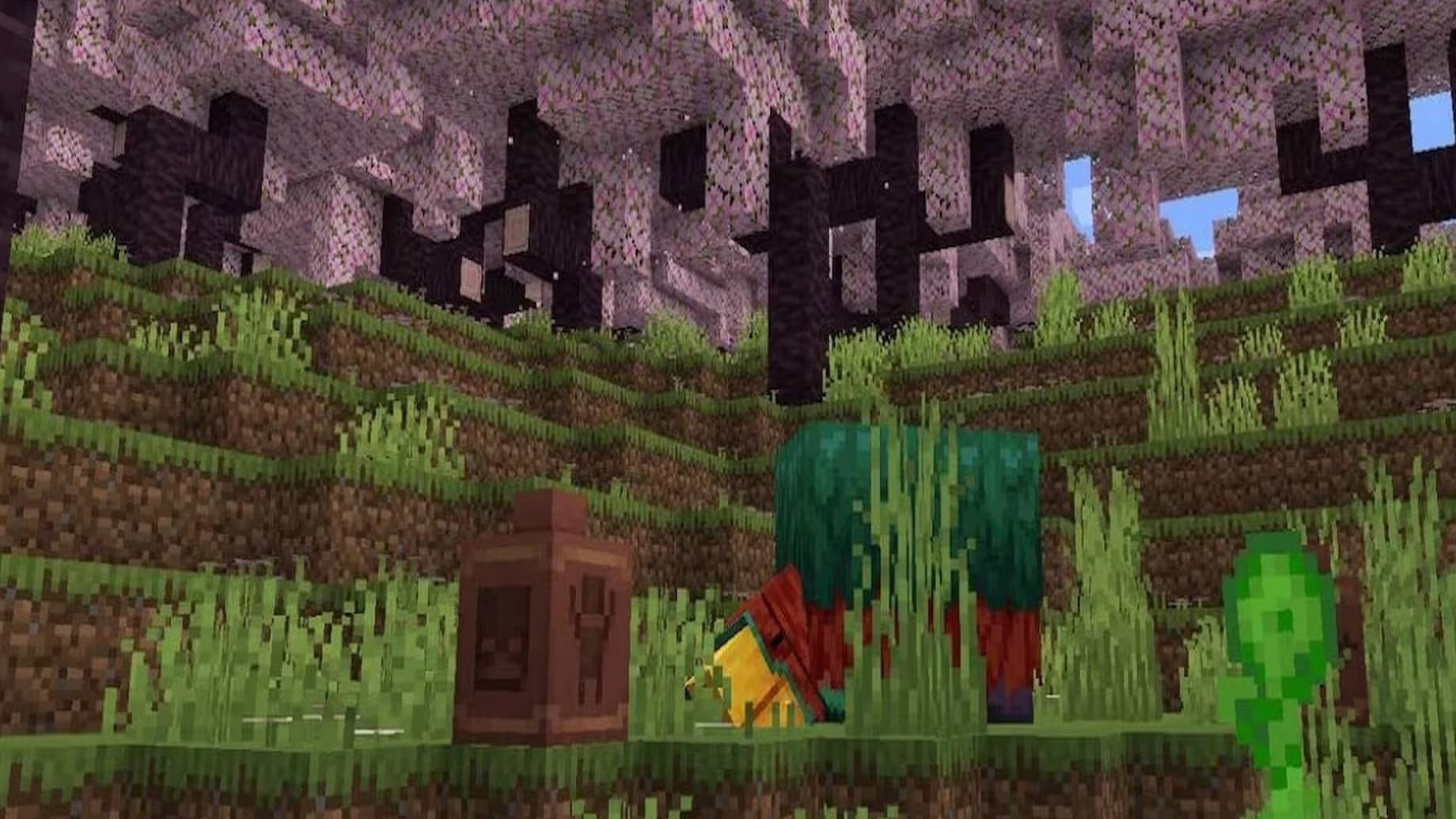
Decorated pots can be shattered using any tool, and the mining process is instantaneous. If mined with a tool, a decorated pot will drop the four pottery shards or bricks used in its creation. However, if the pot is mined empty-handed, with an item other than a tool, or with a tool enchanted with Silk Touch, it will drop itself.
New Structure – Trail Ruins
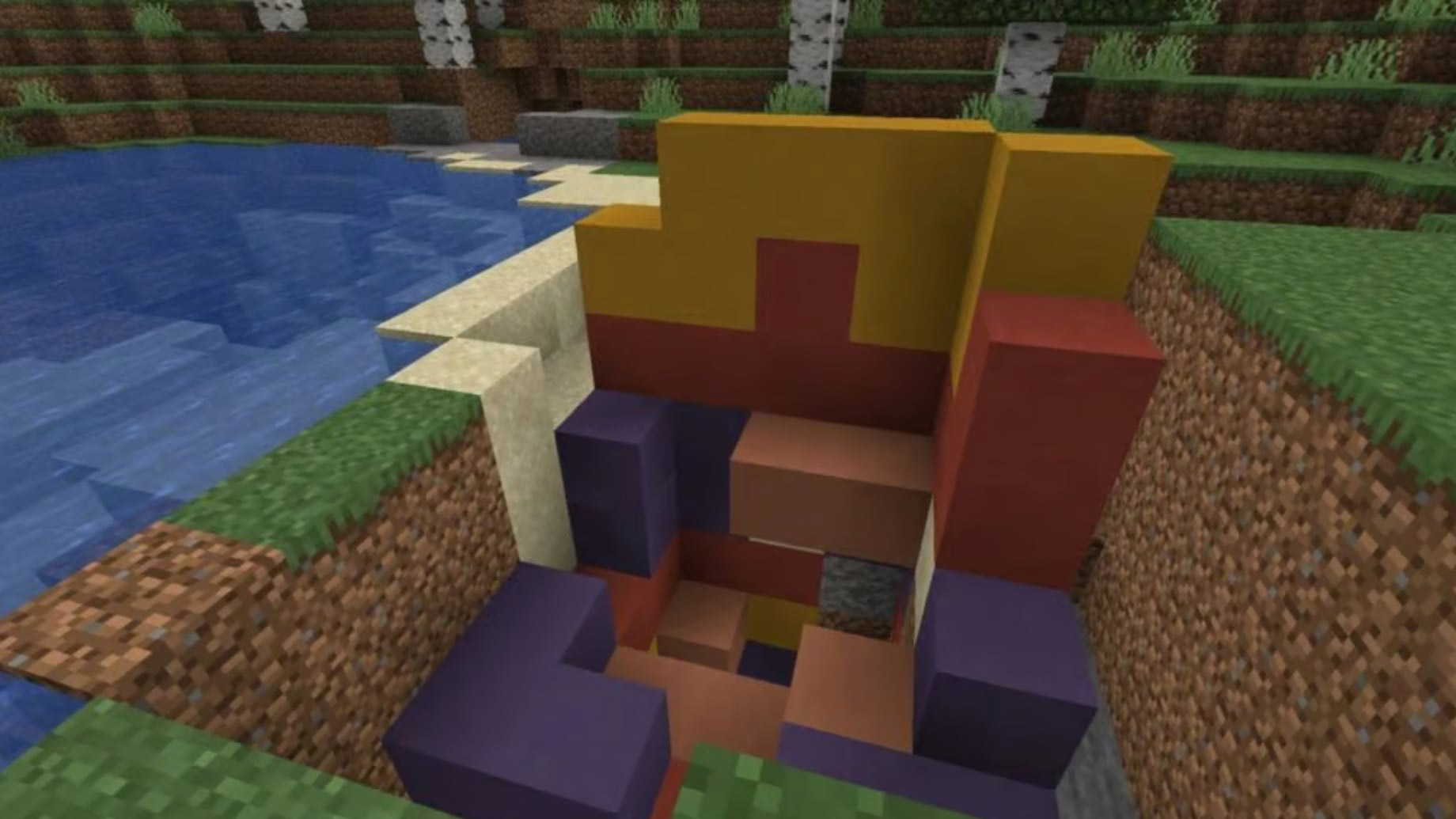
A Trail Ruin is a subterranean structure that serves as an archaeological site, spawning suspicious gravel. These ruins can be discovered in various temperate, cold, and snow-covered biomes, and they bear a striking resemblance to dilapidated villages from an erstwhile civilization.
Trail Ruin Locations
Trail ruins can be located either on land or submerged underwater, often in proximity to a river, an aquifer, or an ocean. You can encounter these structures in a variety of biomes such as taiga, snowy taiga, birch forest, and jungle biomes.
Trail ruins are structures that largely materialize underground, leaving only a small section visible above the ground. These ruins mimic miniature, ancient settlements. Each trail ruin is characterized by a main road made of cobblestone, stone, and stone bricks, which links numerous small buildings to a central tower crafted from terracotta and glazed terracotta. The tower’s tip is typically the only part of the structure that isn’t buried underground. Adjoining the tower, you’ll find two rooms, and occasionally other small buildings and decor fashioned from mud bricks and terracotta. The majority of the structure is encased in gravel, dirt, and coarse dirt, including suspicious gravel. In the Bedrock Edition, these ruins are generally more prominently exposed on the surface compared to the Java Edition, with instances where the entire trail ruin might be surfaced, though sections still remain ensconced in dirt and gravel.
Other New Items & Features
Armor Trims & Customizations
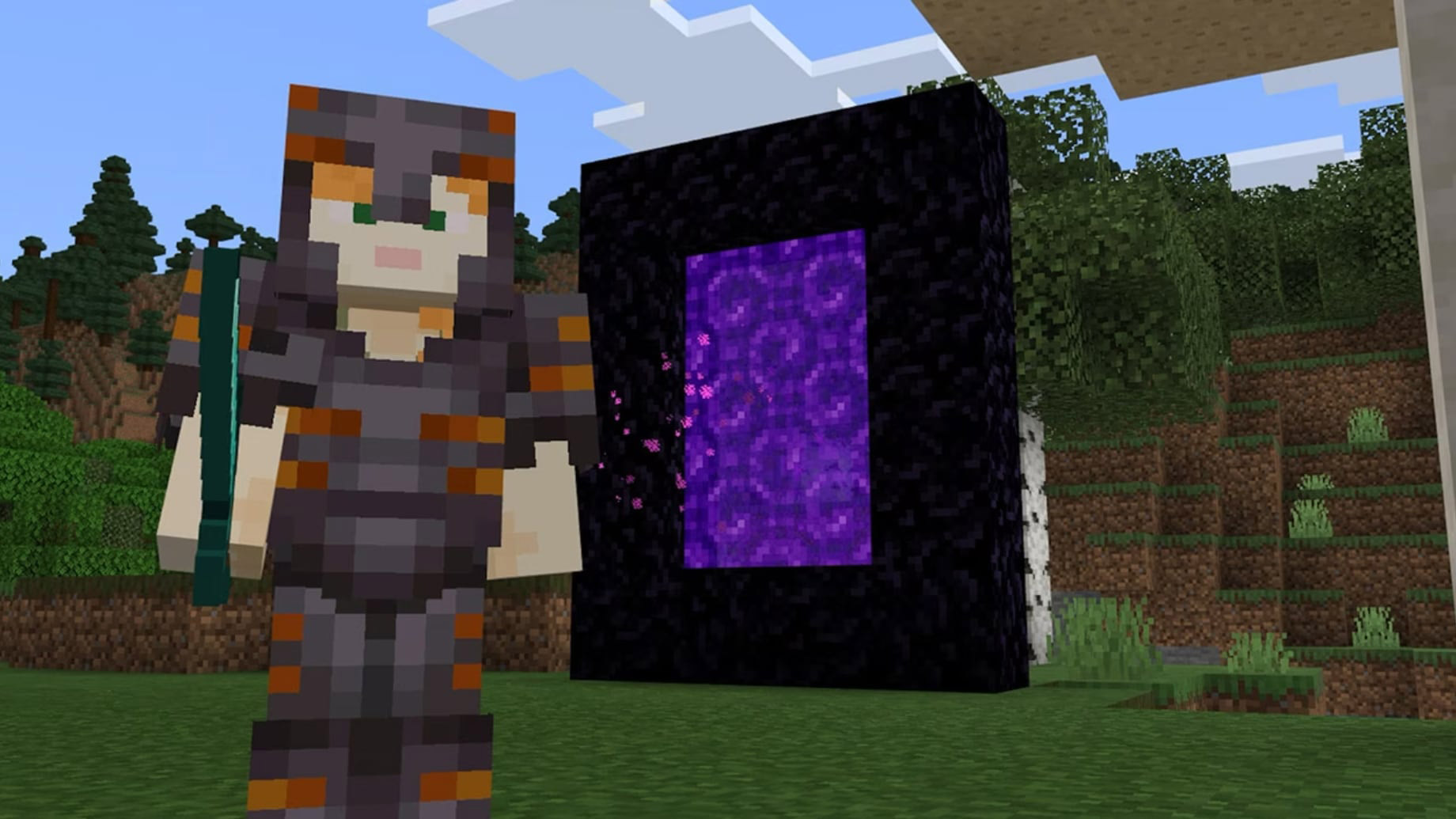
In Minecraft 1.20, after years of offering the standard armor look, is finally introducing armor customization to the game. With 16 pattern designs in 10 distinctive colors available for each armor piece, the possibilities for styling your armor are vast, considering the different armor types and the ability to mix and match items.
This armor customization feature is facilitated by a new item called ‘armor trim.’ Variations of this item can be found in nearly every significant structure throughout the Minecraft world, which opens up a lot of activities for exploration.
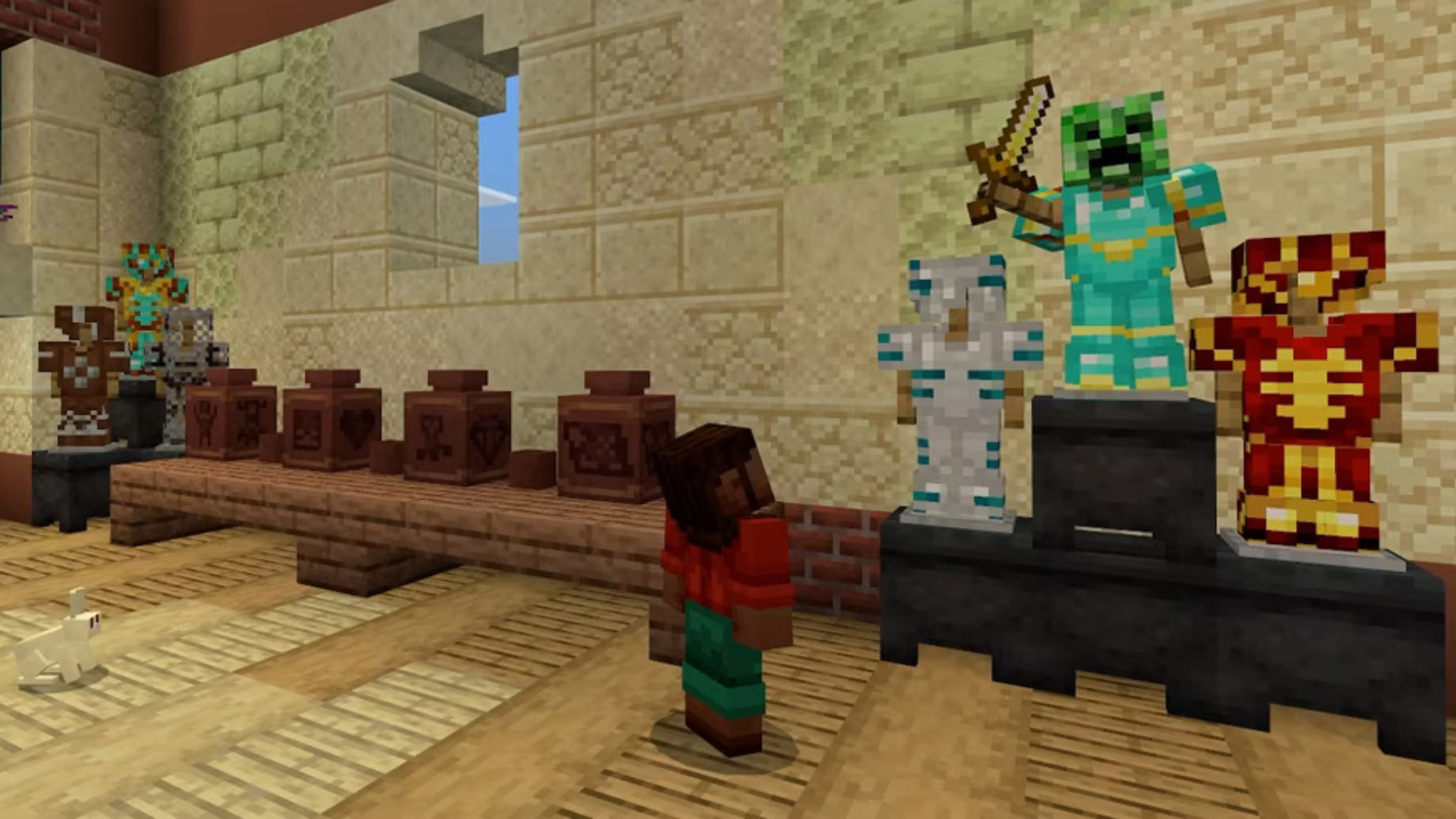
To customize your armor, you’ll need to locate the trim, then combine it with your chosen armor piece and color via the new Smithing table user interface. While these custom designs certainly enhance the aesthetic appeal of your armor, it’s important to note that the purpose of armor trimming is purely cosmetic. For instance, applying gold trim to your armor won’t make it any more appealing to Piglins. Nevertheless, we expect these uniquely designed armors to become popular in top PvP Minecraft servers as team uniforms.
Cherry Blossom Wood
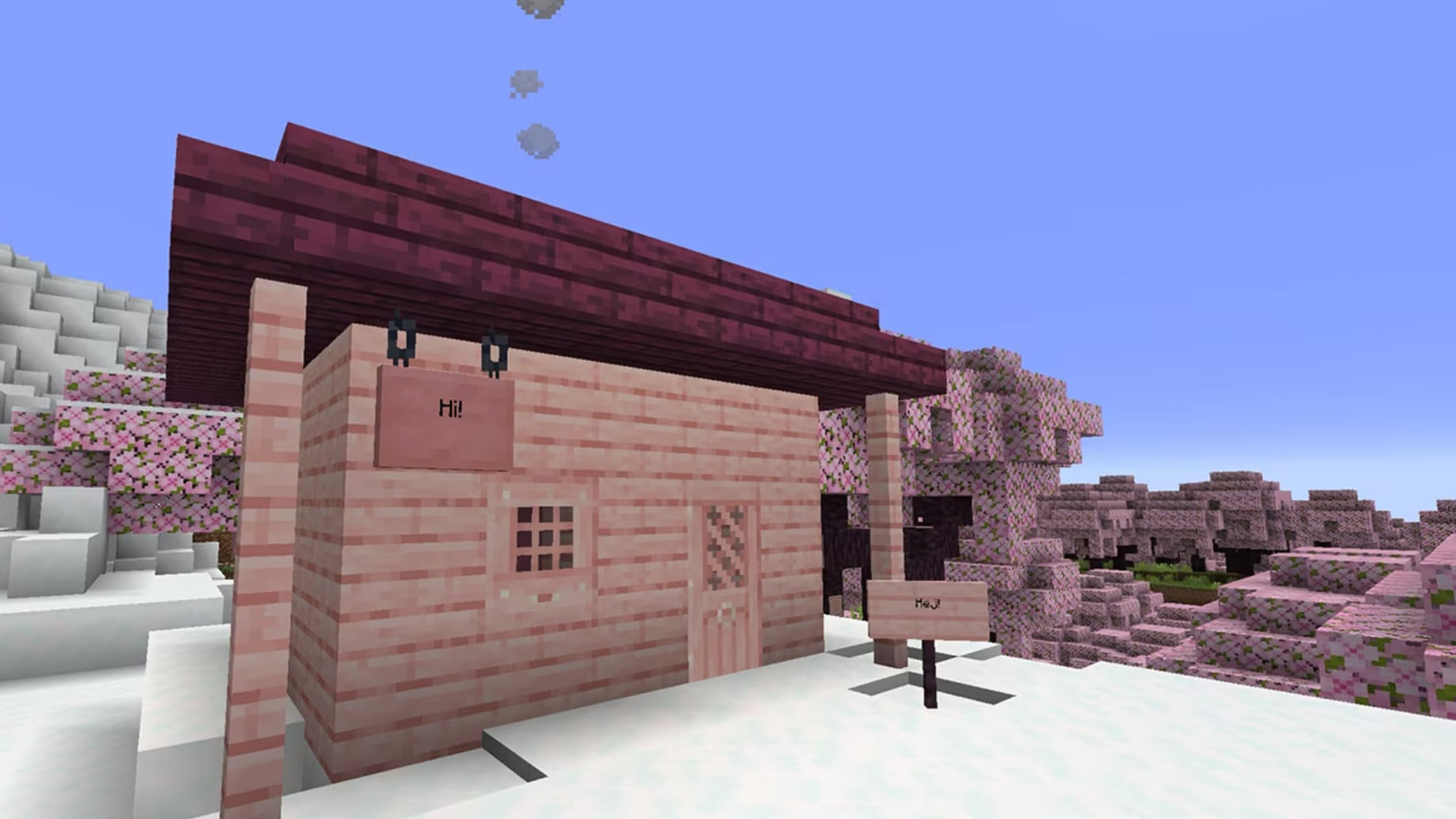
The cherry tree offers a complete set of wood-related items and can be crafted into the upcoming hanging sign, a new addition with Minecraft 1.20. Cherry tree saplings can also be found in the biome, allowing you to grow these trees in any location you desire.
Bamboo Wood
Minecraft 1.20 is set to introduce a new type of wood derived from bamboo, complete with its own planks, blocks, and more. This addition is part of the developers’ endeavour to provide a more diverse and accurate representation of wood types in the game.
What sets this wood category apart is its exclusive selection of blocks. Bamboo wood can be utilized to craft ornamental bamboo mosaic blocks, a feature that doesn’t exist for any other wood types in Minecraft, making it truly distinctive. In addition, bamboo wood can be employed to construct rafts in Minecraft. These function similarly to boats within the game but exhibit a more open appearance.
Hanging Signs & Edit Signs
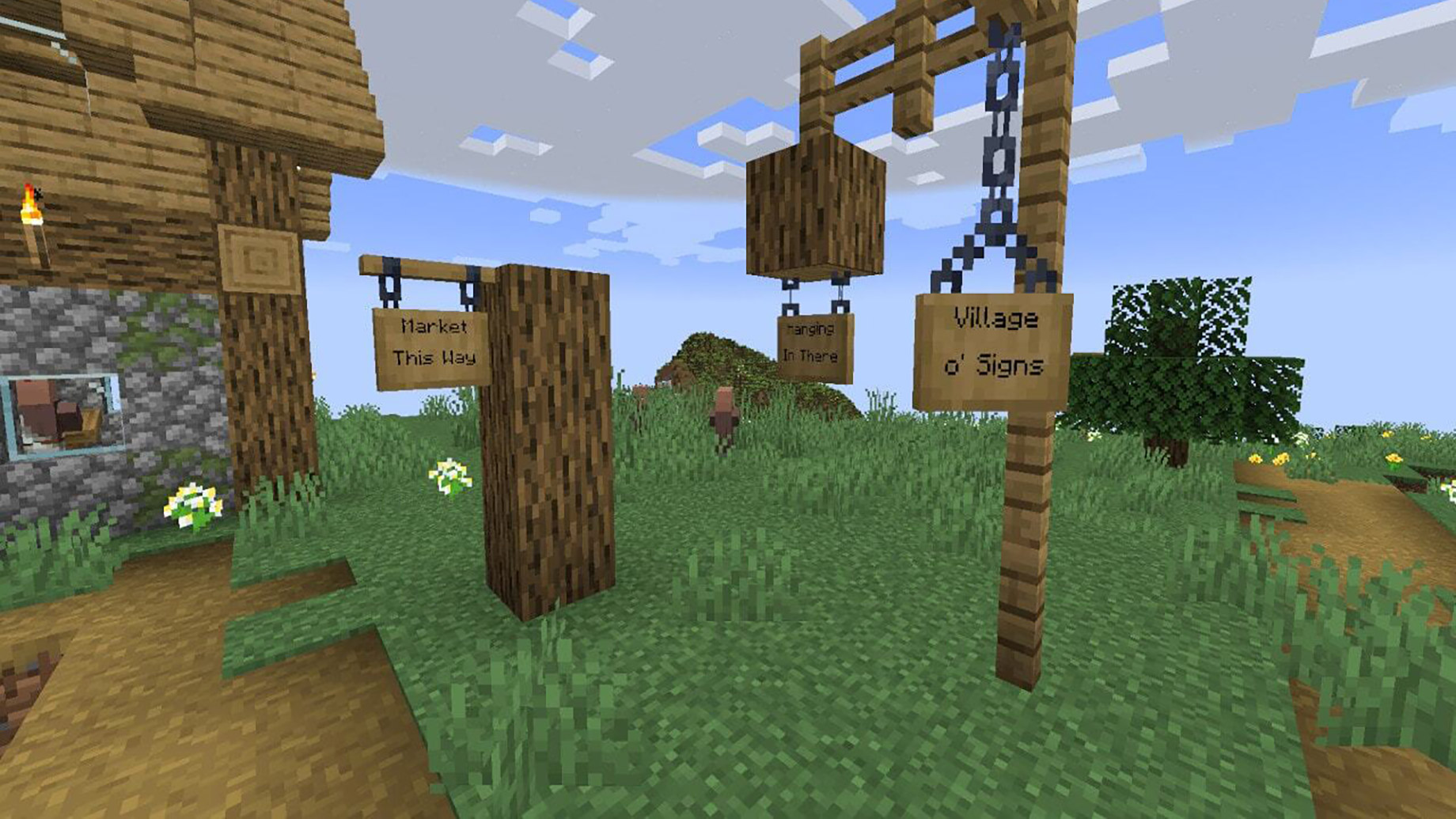
Addressing the perennial issue of finding the perfect spot for your sign, the new hanging signs can be attached to any block. They can be positioned on the sides or even the bottom of blocks, eliminating the need to place them solely on the ground. Additionally, you can create a plethora of decorative elements by stacking signs under each other, forming a structure reminiscent of wind chimes.
Moreover, Minecraft 1.20 introduces the ability to edit signs and modify the text on them. You will no longer need to demolish the sign and craft a new one when changes are needed, which is a much-appreciated quality of life change. Text can now also be added to both sides of the sign, further enhancing its utility.
Chiselled Bookshelf
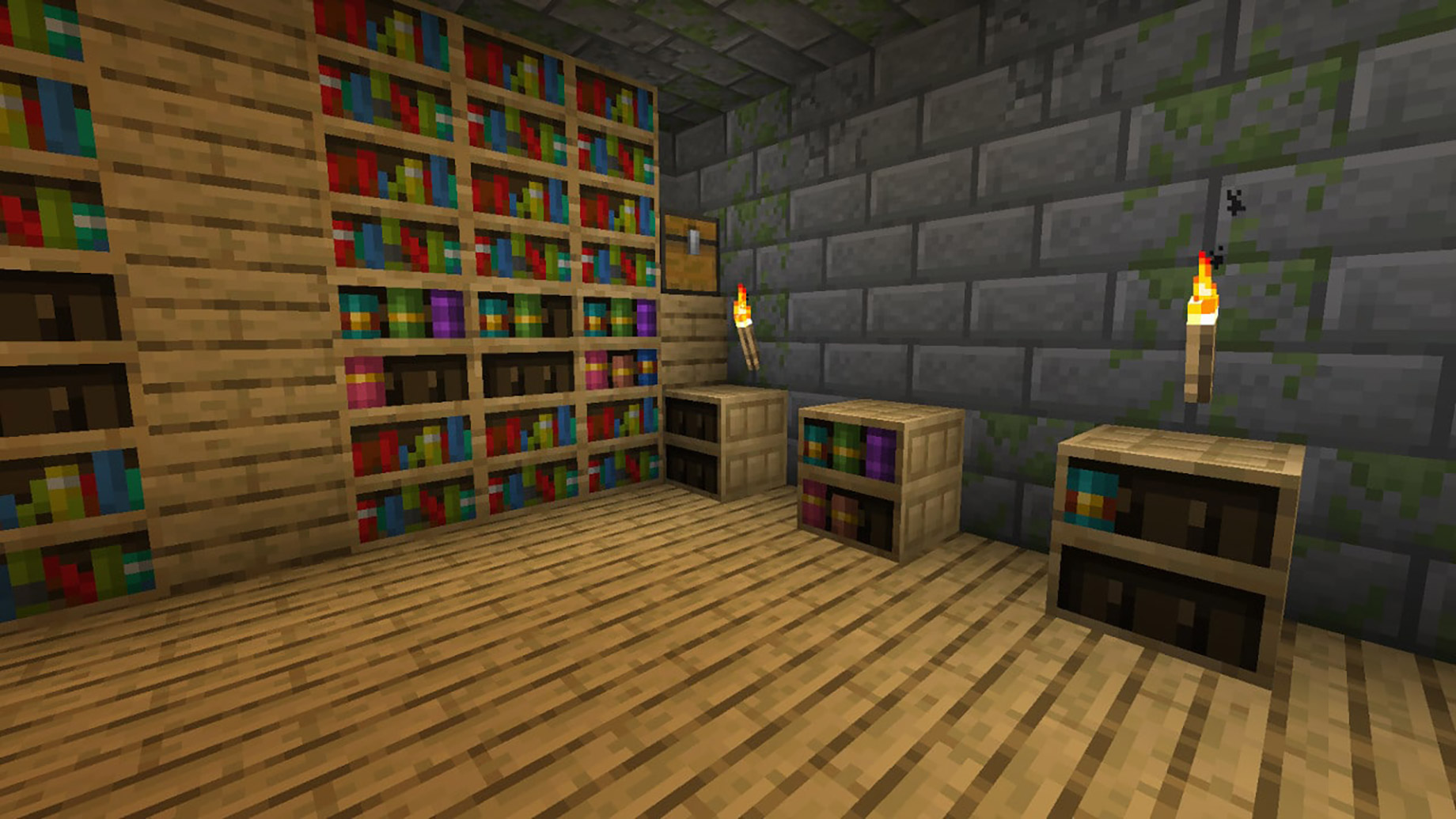
Finally, bookshelves in Minecraft now serve a purpose beyond aesthetics along with enchanting. With the crafting of the new chiselled bookshelf, you now have the ability to store both regular and enchanted books. Although you have the liberty to place any book in any slot on the chiselled bookshelf, visually distinguishing between them is not possible. However, this does not imply that each slot is functionally identical. Each individual storage slot on the bookshelf emits a Redstone signal with varying strengths. Therefore, with proper mechanics, you can utilize a chiselled bookshelf to create hidden passageways.
Banner Shields
Another highly anticipated feature making its way to Minecraft 1.20 is the ability to affix banners to shields in the Bedrock Edition. After creating a vibrant banner using a loom, you can merge the banner with a shield on the Crafting Table to embellish the shield with it. This feature, coupled with the armor trims, allows for further personalization of your in-game character.
Bamboo Wood & Bamboo Raft
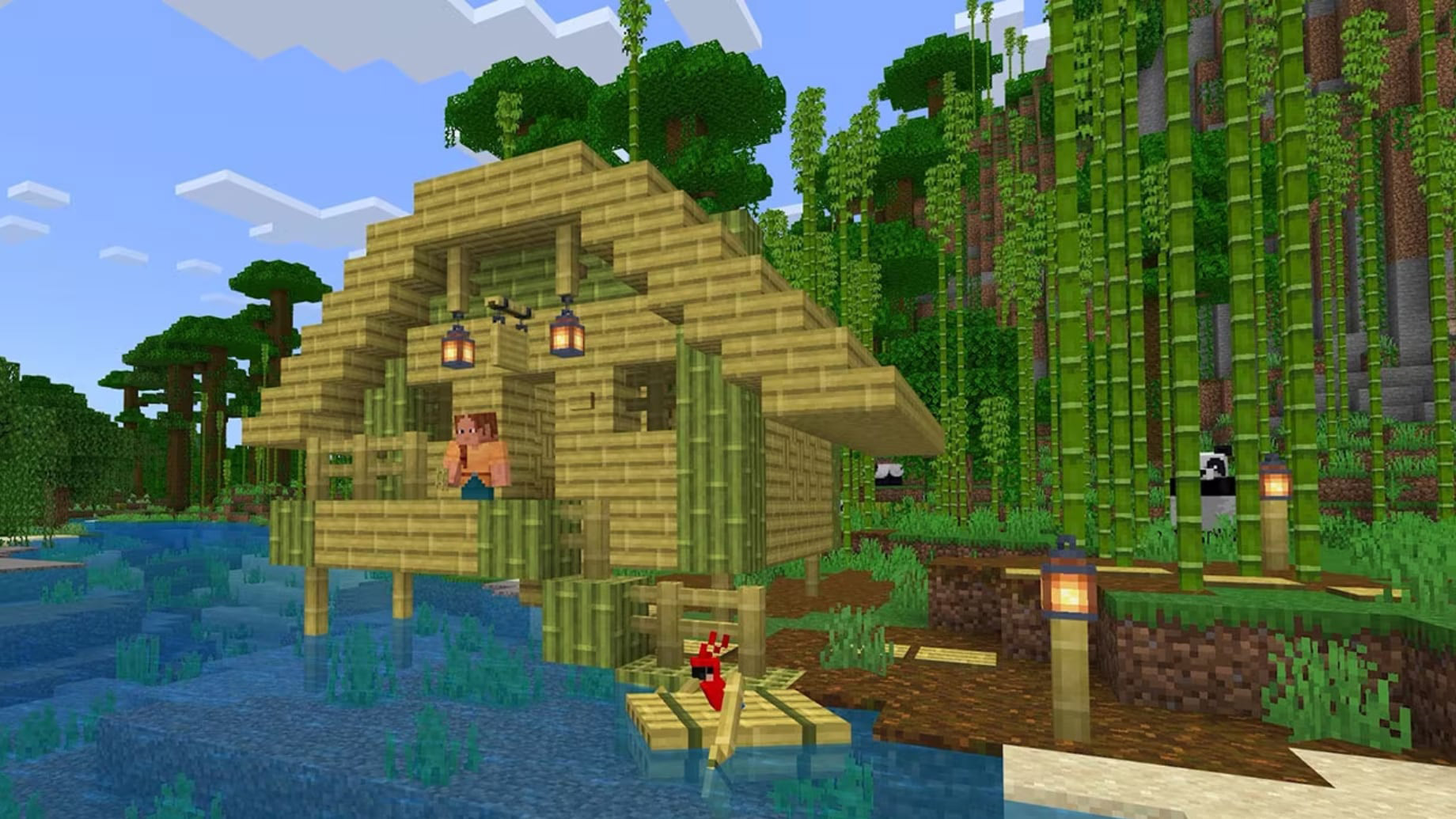
The Bamboo wood, introduced in the Minecraft 1.20 update, serves as the game’s tenth wood variant. It carries a resemblance to real-world dried bamboo, providing a fresh and distinctive aesthetic compared to other wood types. Its texture features a long, straight line across its surface, ideal for crafting seamless patterns in Minecraft home construction.
Contrary to other wood types, bamboo wood does not come from trees. Instead, players must utilize bamboo pieces, already a game component, to construct new blocks. As such, bamboo wood blocks do not occur naturally within the Minecraft world. In the game, wood types typically originate from either wood or hyphae (fungus) log blocks, which naturally generate in the world. These can be transformed into planks, which subsequently serve as the basis for crafting other wood items.
However, bamboo does not spawn as a log in Minecraft but rather grows as long poles, much like in the real world. To produce a bamboo block (functioning like a log), you must assemble nine bamboo pieces on the crafting table.
New Mob Heads
Mob heads, dropped by some mobs when defeated by a charged creeper, have long been a part of Minecraft. However, their use has been largely simplistic, often serving as masks or decorative items. With Minecraft 1.20, this changes as the game now allows the combination of mob heads with Note blocks to produce ambient mob sounds. The sound produced corresponds to the mob from which the head originated. For instance, a skeleton skull creates the sound of an arrow being fired. Moreover, Minecraft 1.20 expands the variety of available mob heads by introducing Piglin heads. To acquire one, you’ll need to venture into the Nether and eliminate a Piglin using a charged creeper. This new head generates Piglin sounds and its ears waggle when activated by a Redstone signal.
Calibrated Skulk Sensor
The new addition to the Sculk block lineup in Minecraft 1.20 is the Calibrated Sculk Sensor. This novel Redstone component enables you to “filter vibrations based on their frequency level.”
Unlike other blocks, Calibrated Sculk Sensors don’t occur naturally in the Minecraft world. The Calibrated Skulk Censor can be crafted by players using the Sculk Sensor and Amethyst shards.
Other Changes
Netherite Changes
Acquiring Netherite items in Minecraft 1.20 will pose a greater challenge due to the introduction of the new Upgrade Smithing Template. This item is now a necessary component for crafting Netherite armor or a Netherite sword on the Smithing Table. Hence, your crafting process will not be limited to producing Netherite ingots. You’ll also need to procure the upgrade template from the Bastion Remnant. Keep in mind that these templates are not easily obtained, and each item upgrade requires one.
Redstone Changes
In addition to the calibrated sculk sensor and the chiselled bookshelves, several notable Redstone modifications have been implemented in the Minecraft 1.20 update:
- Jukeboxes, in the updated version of Minecraft, now generate a Redstone signal that corresponds to the music disc being played within. This output can be detected and measured by a comparator.
- The majority of Redstone signals triggered by vibrations have undergone alterations in the latest update.
- In the new update, boarding and disembarking entities, such as minecarts, boats, and rideable mobs, now also activate a sculk sensor.
New Default Skins
For an entire decade, players were limited to selecting one of two iconic skins, Steve and Alex. However, the Minecraft 1.20 update introduces a new assortment of default skins for players to embody. These new characters are Noor, Sunny, Ari, Zuri, Makena, Kai, and Efe.
Minecraft 1.20 Bedrock & Java Edition Parity Changes
Spectator & Hardcore Mode
As previously indicated, Minecraft’s spectator mode is currently under development for the upcoming update. Consequently, it wouldn’t be surprising if this mode were to be released in tandem with the hardcore game mode for Minecraft Bedrock.
The hardcore game mode’s primary feature is permanent death. However, in the Java edition, the hardcore game mode incorporates the spectator mode as an integral function.
Editor Mode
Bedrock Edition is set to receive one of the most distinctive major vanilla features in Minecraft history — the Editor Mode. This tool streamlines and accelerates building by allowing you to ‘paint’ with blocks, enabling you to construct large structures in mere minutes. You can also select certain sections of the world, duplicate them, and commence pasting them elsewhere.
This tool is so extraordinary it could make one question whether it truly is a vanilla feature. It’s primarily designed to assist map creators in constructing expansive maps accessible to the entire community.
Recipe Unlocks
Java users are familiar with this feature, but now Bedrock players can also access it as an experimental addition. This means that whenever you gather new materials in your Minecraft world, a “Recipe Unlocked” notification will appear at the top right of your screen. Furthermore, this feature also instructs you on how to craft items or tools that you receive from friends.
Sneaking & Crawling
Indeed, you understood correctly. Minecraft Bedrock has now matched Java with this straightforward feature. Players will now begin to crawl when they find themselves in a one-block gap (which can be created using a trap door or piston). The Minecraft 1.20 update also introduces a new crawling animation, and the speed of crawling will be the same as that of sneaking.

